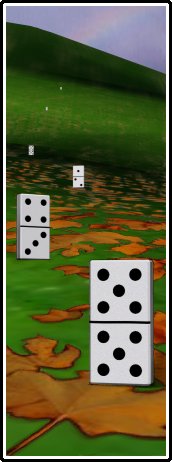 |
| As Autumn settles in, AI Factory
welcomes you to the third of our quarterly newsletters. This issue
switches from game competitions and chess to address two major generic
topics in the creation of game engines: tree search is certainly a
key technology, which is hard to avoid in games programming, while
hill-climbing is conceptually simpler, but fraught with dangers for
the games programmer. These are techniques that require some rigor
to use well. Detailed in the round-up, company activity this quarter
has seen the roll-out of another new product, which is now on worldwide
sale. |
 |
|
Article: Evaluation by Hill-climbing: Getting the right move
by solving micro-problems: Linear evaluation is commonly founded
on this core concept. |
 |
|
Article: Off-the-shelf AI : Plug-in Minimax: Minimax
is the bedrock of many games engines. AI Factory has turned this into
a generic component. |
 |
|
The 3rd Party Engine resource: AI Factory
has many game engines, all with the same interface for every platform. |
 |
|
Custom AI for 3rd parties: With our background
in AI, we are involved in producing customised AI components for 3rd
party developers. |
 |
|
Quality 3D products: We already have a range
of very high quality 3D products with state-of-the art visual effects. |
 |
|
Quarterly round-up: General news about company
activities and new products. |
 |
|
AI Factory home:
This links through to the main AI Factory website. From there you
can review our products and access our engineering documentation. |
|
|
|









 Playing stronger by learning:
methods for improving play game-to-game using learning.
Playing stronger by learning:
methods for improving play game-to-game using learning.  The impact of
the AI Factory testbed architecture on game development.
The impact of
the AI Factory testbed architecture on game development.  Imperfect games:
trying to find the best play when you do not have all the information.
Imperfect games:
trying to find the best play when you do not have all the information.
 Forgotten games:
TAFL.
Forgotten games:
TAFL.  The universal
game control mechanism: Finding a framework that fits all.
The universal
game control mechanism: Finding a framework that fits all.  Driving search
with Plausibility analysis: Looking at the right moves.
Driving search
with Plausibility analysis: Looking at the right moves.  Playing badly:
Trying to create AI that plays badly in a convincingly human way.
Playing badly:
Trying to create AI that plays badly in a convincingly human way.
